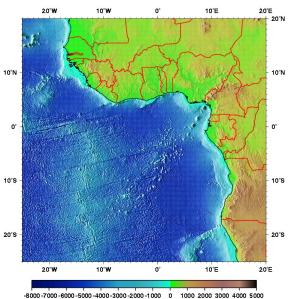migration of the mammoth
April 9, 2009
or banishing the “beta.”, or diverting the discourse, or any of a number of cheesy alliterations from which you are free to choose. The point being, mammoth v.1 is finally launched! It’s just the bloggy side of things for now, where we will write about things like “extinct megafauna, the production of urban space through the manipulation of infrastructure, landscape processes, and tactical architectural interventions aimed at forestalling the arrival of our inevitably dystopian future and/or ushering in a new era of global harmony.” GO: http://m.ammoth.us/blog/
We will keep this space open in much the same role it currently serves: a virtual studio which aids and abets Rob and I in our collaborative efforts. It will birth many a future publication, competition entry, and design proposal. But mammoth proper is where they will gestate, where their fundamental components will be formed. So stick around and let us know when we’ve gone wrong, but read the new one too (this is why God invented RSS, after all).
BRKT is submitted! Now lets fix it!
February 3, 2009
Our project, Hydrating the Musseques (it’s a working title…) has been submitted to BRKT.org.
you can see it here in full:
https://betamammoth.wordpress.com/hydrating-the-musseques/
A running list of things we’d like to change and/or add to the project by the time it goes to press if accepted:
1 collage of the musseques; showing net structure and water distribution as created with found materials in the context of the informal settlements. In this rendering, we should also make sure and use the distinctive trees you noted from video1, and stick a motorbike in there.
2 phased net deployment / change in nets over time with multiple D3 plan diagrams
3 get deeper into the generative effects the infrastructure has on the city and its evolution; communities; etc
DONE 4 show a shift in colors on D7 to match text
5 overlay list of statistics on mussque image (also use updated formatting — in numerical order)
6 (?) change the formatting of the captions to look more like the early draft you sent, with select lower contrast colors and big block letters
7 lateral: flatspace style study of different net layouts (not D3 style distribution of net types, but plan drawings of experimental ways that the infrastructure is constructed.) Should show net type (color), water distribution points (and estimated output at those points according to the m2 of net which drains to each point), and how different arrangements can create different sorts of urban spaces/organizations, and other as-yet-unimagined generative effects.
8 develop the most formal part of the infrastructure: the algae tubes/biodiesel plant/fog farming interface. Perhaps I, the architect, even endeavor to design some sort of “building” (in all honesty, though, this feels more like an outdoor assembly which is well integrated into the urban campus than a stand-alone structre, even one which is centrally located and accessible).
9 overlay on ingombotas render to breakdown the differing functions/quantities of net systems
At this point, I’d also like to put the question out to our MASSIVE reader base, and farm some suggestions from you all: What sort of changes do you suggest? What about the project is missing, or unclear?
luanda: ocean currents
December 14, 2008
some quality information on ocean currents off the coast of angola. not terribly detailed, but probably enough to generate visualization of the detail we might require:
http://oceancurrents.rsmas.miami.edu/atlantic/angola_2.html

particularly like this one, which plots the raw data of buoy movement (which is then assembled into speed and trajectory information):


a couple more maps:
http://www-odp.tamu.edu/publications/175_SR/chap_10/c10_f1.htm
http://www-odp.tamu.edu/publications/175_IR/chap_12/c12_f1.htm
http://www-odp.tamu.edu/publications/175_SR/chap_19/chap_19.htm
mammoth creators of the world
November 23, 2008
apparently, we are not the only ones – just the most frugal.
http://www.nytimes.com/2008/11/20/science/20mammoth.html?_r=1&scp=1&sq=with%20mammoth%20genes&st=cse
user friendliness
November 14, 2008
1. option to subscribe to comments via email for a post
2. categories tags in cloud format
3. brief links in a side bar?
4. potentially seperate long form content and more frequent blog updates into two columns. see also how coreformula provides special links to long form content as an alternative. together with links in a side bar, this might suggest three levels of content (link, blog, article?).
